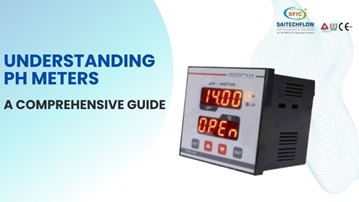Understanding pH Meters: A Comprehensive Guide

PH meters are invaluable tools in various industries, laboratories, agriculture, and even home applications. Their ability to measure the acidity or alkalinity of a substance provides crucial insights into processes ranging from scientific experiments to quality control in manufacturing. In this comprehensive guide, we will delve into the workings of pH meters, their applications, calibration methods, and tips for optimal use.
What is pH?
PH is a measure of the hydrogen ion concentration in a solution, determining its acidity or alkalinity. The pH scale ranges from 0 to 14, with 7 considered neutral. Values below 7 are acidic, while those above 7 are alkaline (basic). This fundamental concept is vital in understanding the importance of pH meters.
How pH Meters Work
pH meters consist of a probe (electrode) and a meter that measures the electrical potential difference between the probe and a reference electrode. The pH electrode usually contains a glass membrane that interacts with the hydrogen ions in the solution being tested. When immersed in a solution, the electrode generates a voltage proportional to the pH level. The meter then translates this voltage into a pH value, displaying it on the screen.
Applications of pH Meters
1. Laboratory Use: pH meters are indispensable in laboratories for analyzing chemical reactions, titrations, and determining the pH of various solutions.
2. Agriculture: Monitoring soil pH is crucial for optimizing crop growth. pH meters help farmers determine if soil amendments are needed to adjust pH levels for better plant health.
3. Water Quality Control: Assessing the pH of water sources is vital in ensuring safe drinking water and maintaining aquatic environments.
4. Food and Beverage Industry: pH meters aid in quality control during food and beverage production, ensuring products meet safety and taste standards.
Calibration of pH Meters
Calibration is pivotal for accurate pH measurements. It involves adjusting the meter to recognize known pH standards. Typically, a two-point calibration is recommended using solutions at pH 4.01 (acidic) and pH 7.00 (neutral). Some meters allow for additional calibration points at pH 10.01 (alkaline).
Tips for Using pH Meters
1. Proper Storage: Keep the pH electrode moist when not in use and store it in the recommended storage solution.
2. Rinse between Measurements: Rinse the electrode with distilled water and gently blot dry before taking measurements in different solutions.
3. Regular Maintenance: Follow manufacturer guidelines for cleaning and maintenance to prolong the lifespan of the pH meter.
Conclusion
PH meters are indispensable tools across multiple industries, facilitating accurate measurement of pH levels in diverse substances. Understanding their functioning, proper calibration, and maintenance is crucial for obtaining precise results. Whether in laboratories, agriculture, or quality control processes, the importance of pH meters in ensuring safety, quality, and efficiency cannot be overstated. With proper use and care, these devices play an essential role in various scientific and practical applications, making them an indispensable asset in today's world.
Thank you for considering Saitechflow Instruments & Control for your PH meters requirements. PH meters please check also, we provide installation and commissioning services for the same. Write us at reach at sales@saitechflowinstro.com. If you have any questions, need a quote, or require technical assistance, please don't hesitate to get in touch with us.



